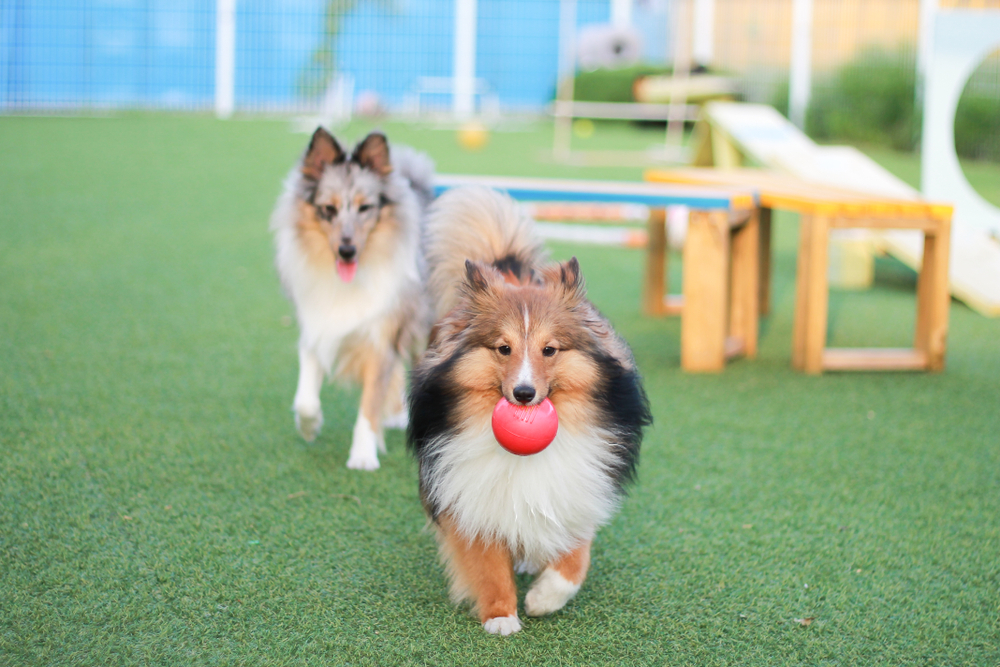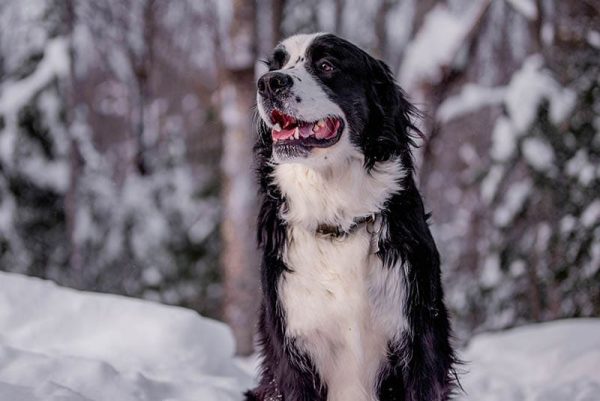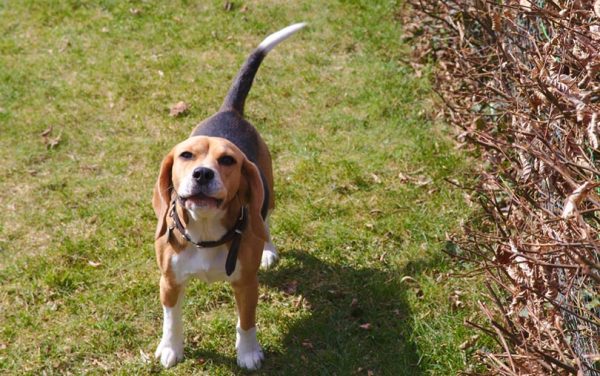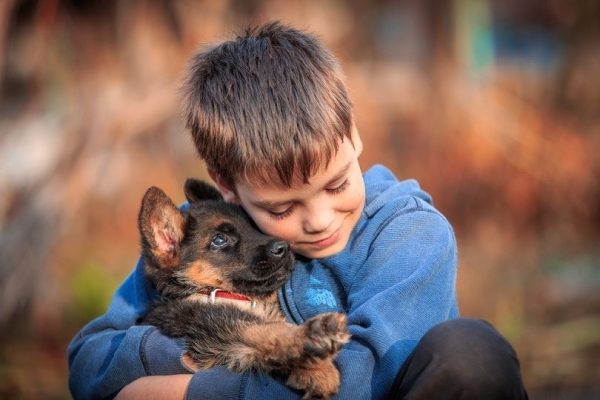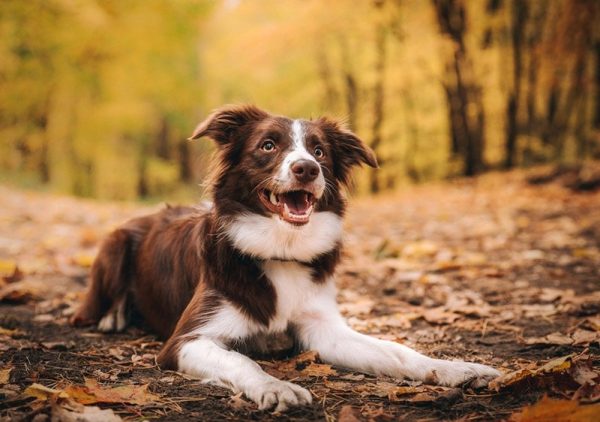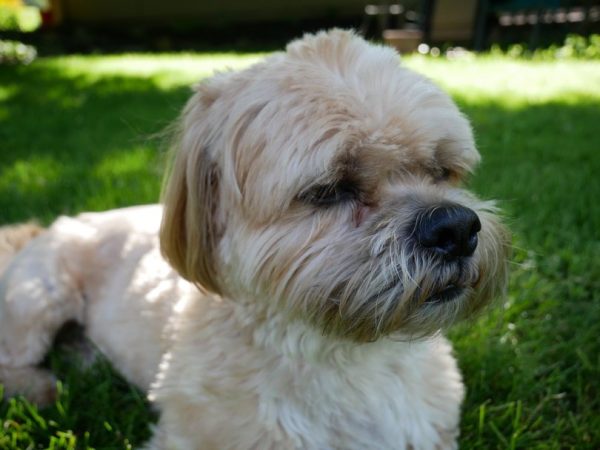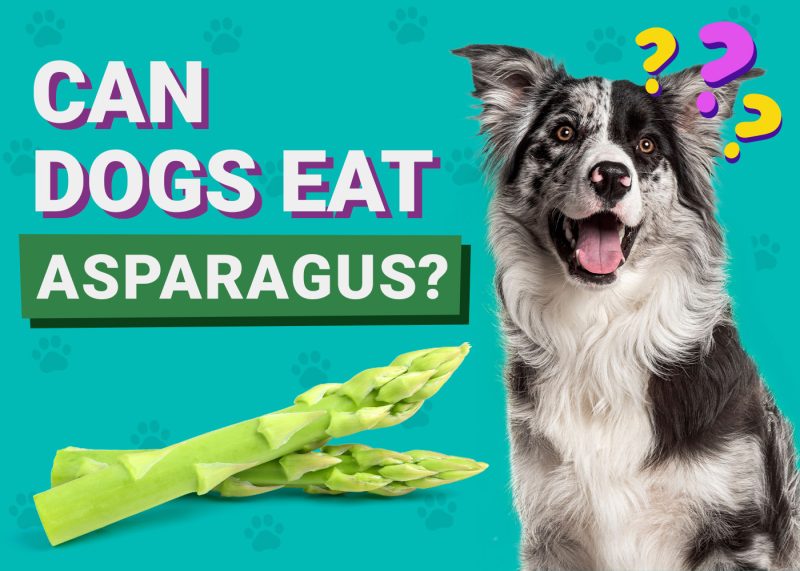If you’re in a single-dog household, you’ve no doubt been wondering whether your pooch could benefit from some extra canine interaction. While not every dog wants or needs to live with another dog—this depends on individual personalities—as social animals, many benefit greatly from having the opportunity to spend time with and play with other dogs with similar play styles.
That said, for some dogs, it can be tricky to find the perfect playdate, so we’ll share some tips on how to find pooches that can provide extra enrichment and companionship. We’ve split the tips into two categories: factors to consider when looking for a playmate and tips for actually finding one.

Factors to Consider
1. Your Dog’s Personality & Playing Style
It’s not just humans that can experience a clash of personalities—dogs can, too. First of all, you’ll want to think about the personality traits your dog has and what kind of friend or play partner would complement them well. This is important because fights can break out if one dog gets too irritated by another.
For example, if your dog likes the company of other dogs but doesn’t like roughhousing or overly excitable play, they’d be better off paired with a dog with a similarly calm play style and low energy levels. More energetic dogs would better suit an equally exuberant playmate who doesn’t mind when things get a bit boisterous.
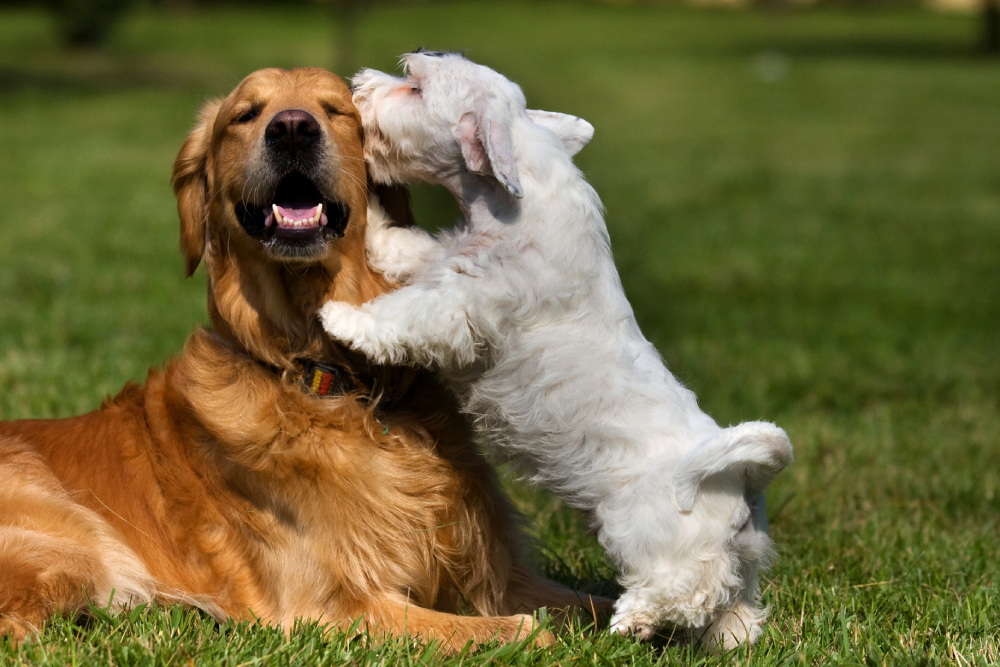
2. Your Dog’s Size
Big and small dogs can often play together and have a great time, but in some cases, pairing small dogs with much larger, stronger dogs could prove dangerous. Even if there’s no aggression, a large dog that plays too energetically and has a poor sense of boundaries could accidentally injure a smaller dog like a Chihuahua or Pomeranian.
This depends, though—some big dogs are fully aware of their size and can adapt their playing style around smaller dogs and puppies so as not to hurt them. If you think you’ve found a good match for your dog, but their potential playmate is much bigger or smaller, there’s nothing wrong with introducing them under close supervision to see how they get along and interact with one another.
3. Resource Guarding Tendencies
Whoever your dog’s playmate is to be, you’ll need to think about the things—if any—that could potentially trigger aggression in your dog when playing so you can avoid nasty situations. Some dogs display a behavior called resource guarding, which means they’re overly protective of food, certain objects, places (like the couch), and/or people.
For example, if your dog has a favorite ball that he or she clearly loves very much, letting another dog play with it may not be a good idea. If your dog gets growly every time another dog or cat gets too close to their food bowl, avoid whipping out any treats to share with other dogs during play sessions.
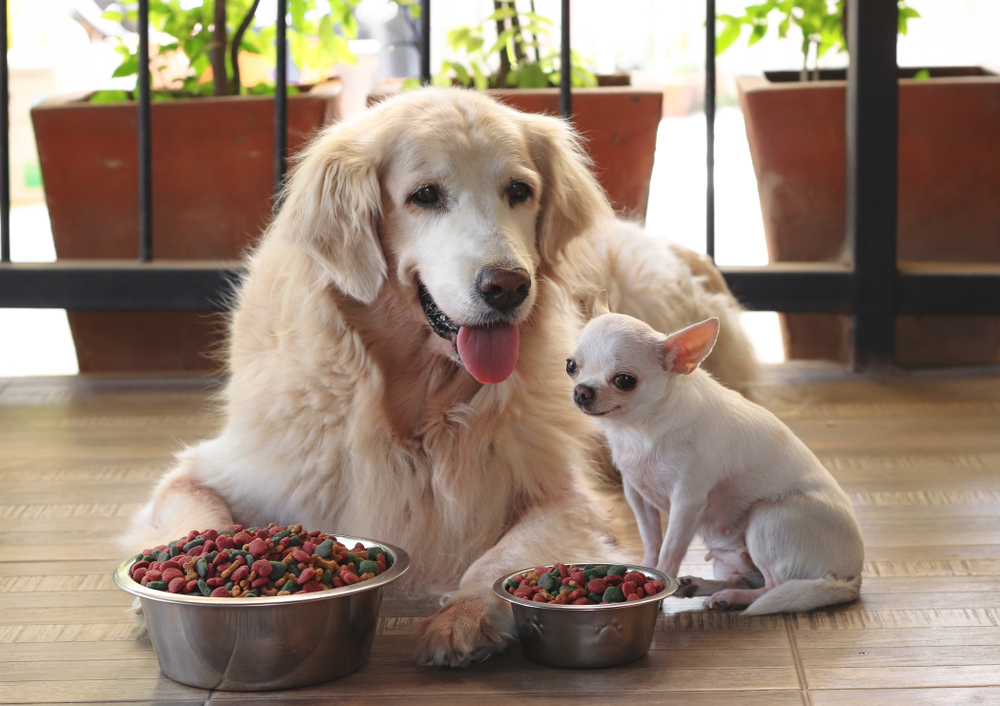

The 8 Tips for Finding a Playmate
1. Reach Out to Family & Friends
If you have family, friends, or neighbors with friendly dogs, you could try reaching out to ask if you can arrange a playdate with your dog. If they’re close friends or family members, this is ideal because you’ll already know the dog and will have an idea of whether it would work out.
However, if you don’t know the person very well, be sure to ask about their dog’s play style and personality to ascertain whether it would be a good match.
2. Get Out and About
Dog parks typically have areas where you can unleash your dog. Of course, you’ll want to exercise caution around new dogs even in on-leash areas because not all dogs get along with one another. For extra security, you might want to keep your dog leashed until you meet a friendly fellow dog parent who is content to let your dog play with theirs.
The dog park isn’t the only place you can meet other dogs, though—even stopping for a few minutes to interact with passersby with dogs while out on walks may be a good way of getting your dog some canine companionship. Just be sure to communicate with the other person to make sure it’s okay for your dog to approach as not all dogs (or owners) are comfortable with this.
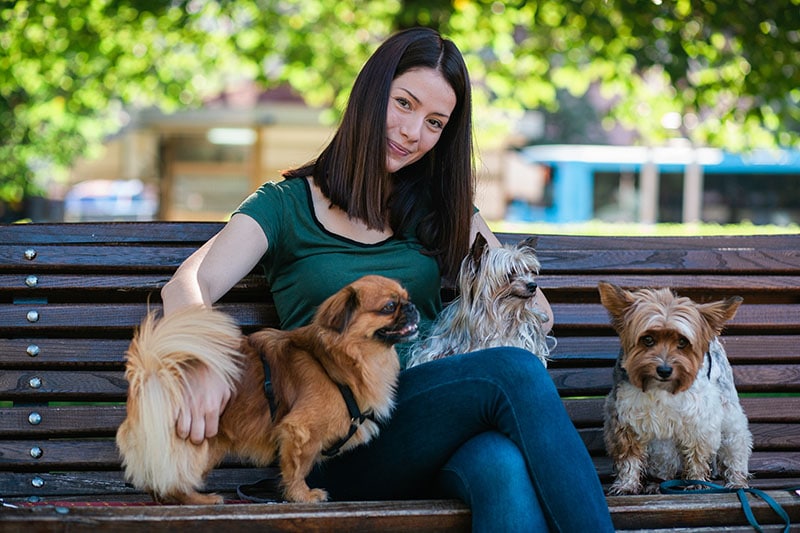
3. Use Dog Meetup Apps/Groups
There are various dog meetup apps and social media groups you could check out. Dog meetup apps are like Tinder but for dogs, and you can often upload pictures of your dog with a description of their personality to “match” with other dogs in the local area.
4. Visit Dog-Friendly Establishments
If your dog is well-behaved in public places, you could try heading to local dog-friendly cafes or other establishments to see who’s there. While your dog won’t usually be able to play with other dogs in these places because they’re too contained, they can still interact with one another, and you may meet a fellow dog parent looking for a friend for their dog.
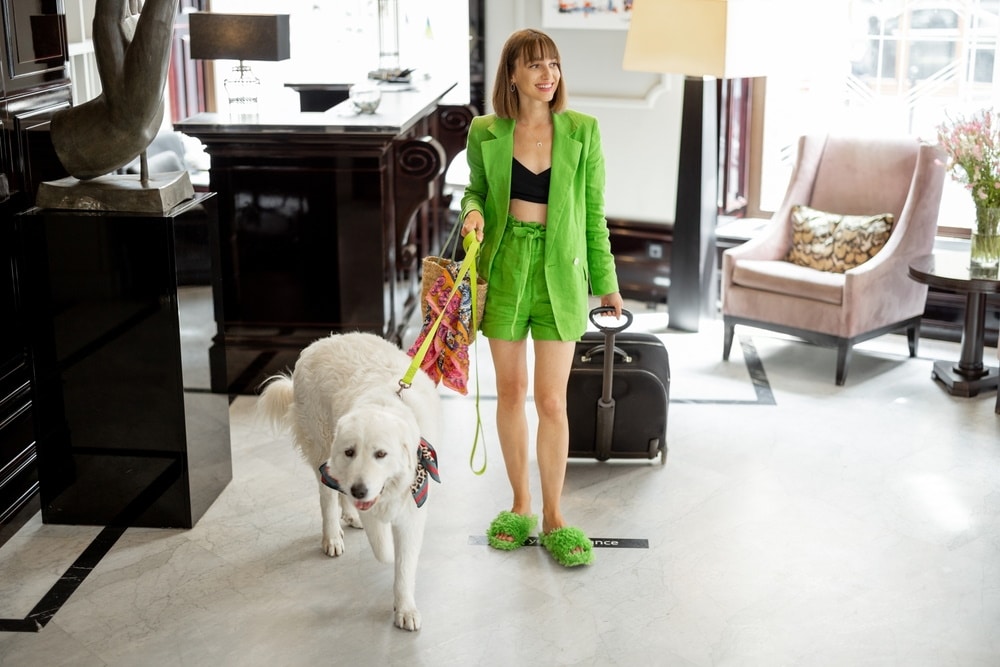
5. Go to Obedience Classes or Play Groups
Group obedience classes offer a chance for dogs to socialize in a controlled environment. You may even find classes geared more toward socialization or play group-style organizations rather than training, so have a look around to see what you can find. Your dog may just find a friend for life!
Just be mindful that not every dog responds well to being in big groups of dogs, so take this into consideration before you sign up.

Extra Safety Tip: Always Closely Supervise
While dogs are interacting with one another, keep a close eye out to make sure there are no signs of aggression like a frozen stance, hard stare, bared teeth, snapping, lip licking, or a guttural bark. End the session immediately and take your dog away if you see this happening.
Also, look for signs that one of the dogs has had enough—this won’t always manifest as aggression but rather as warning signs or avoidant behaviors. Dogs have different ways of showing that they no longer want to play, including (but not limited to) placing their paws on the other dog as if pushing them away, ignoring the other dog and doing something else, or turning their head away from the other dog.
If one of the dogs seems uncomfortable in any way, it’s time to break the play session for the day. Allowing a dog to continue trying to play with another dog that’s over it could lead to a fight breaking out.

Final Thoughts
It’s fine for your dog to be the only dog at home, but if they don’t have any aggressive tendencies, socializing with other dogs—even if only now and again—can do them the world of good.
Many people out there are looking for canine friends for their dogs to play with, and checking out apps, classes, and even just the local park can bring about fast results. The most important thing is to make sure the dogs are a good match for another’s personality.
- See Also: Can Dogs Be Racist? Facts & FAQ
Featured Image Credit: iloveimages, Shutterstock
